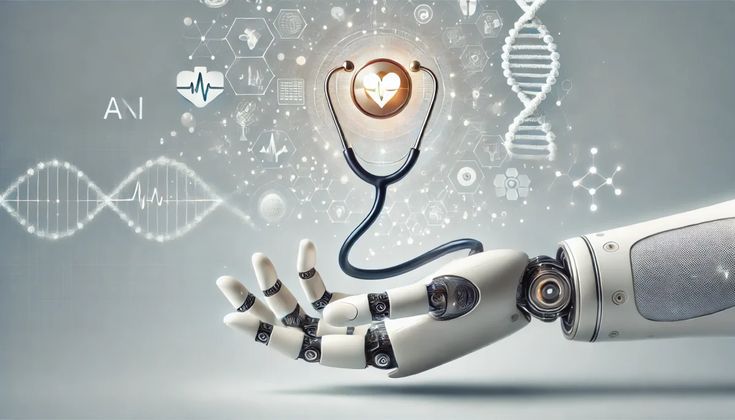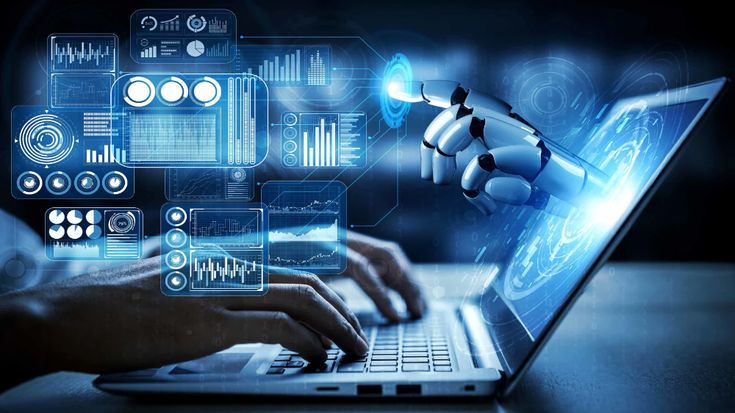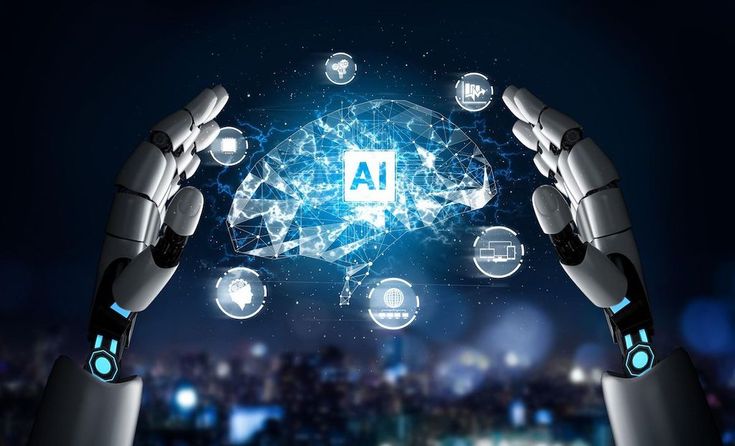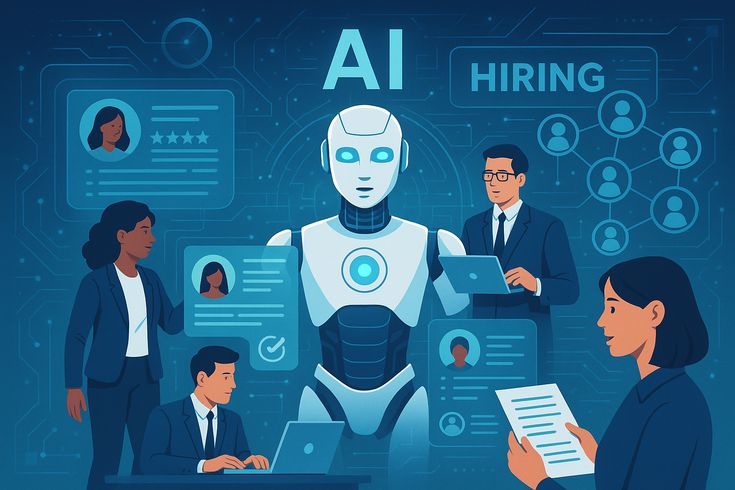1. The Essence of Human-Centered AI

Human-centered AI focuses on designing technologies that genuinely understand and serve people. It prioritizes empathy, user experience, and social context over mere functionality. This approach integrates psychology, ethics, and human behavior analysis to ensure systems anticipate user needs and act responsibly. By reducing algorithmic bias, human-centered AI promotes fairness and equality, making technology accessible to all—regardless of ability or status. It also emphasizes transparency, privacy, and trust, ensuring that users feel confident interacting with intelligent systems. Rather than creating cold, mechanical tools, this philosophy seeks to build emotionally aware and socially responsible technologies that complement human lives. In essence, human-centered AI doesn’t aim to replace people but to empower them—supporting creativity, well-being, and equality through empathetic design and ethical intelligence.
2. Psychology and Ethics in AI Design
Modern AI development draws deeply from psychology and ethics to predict human behavior and prevent harm. Understanding how people think, feel, and act allows developers to create systems that respond naturally to emotions, intentions, and social cues. Ethical principles ensure that such systems operate transparently and fairly, protecting user rights and preventing misuse. By embedding moral reasoning into algorithms, developers can prevent discriminatory outcomes and promote inclusivity. AI that understands human behavior also improves user satisfaction by being intuitive and relatable.
Thank you for reading this post, don't forget to subscribe!This human-science-based approach bridges the gap between cold computation and warm empathy, making AI a genuine partner in daily life. Ultimately, psychology helps machines understand humans, while ethics ensures they respect humanity—creating technology that acts with both intelligence and conscience.
3. Building Trust Through Transparency and Privacy
Trust forms the foundation of successful AI adoption. Users are more likely to embrace AI technologies when they believe their data is handled ethically and transparently. Human-centered AI prioritizes privacy, ensuring that systems collect only necessary information and use it responsibly. Transparent operations—where algorithms can explain their decisions—enhance user confidence and accountability. When AI systems act predictably and respect user autonomy, they foster lasting trust relationships.
In industries like healthcare and finance, where sensitive information is involved, transparent and ethical AI governance becomes crucial. Beyond technical design, trust also stems from consistent human oversight and clear communication. By ensuring honesty and integrity in every interaction, AI evolves from a faceless system into a reliable partner in human progress.
4. AI in Healthcare Transformation

AI is revolutionizing healthcare by combining human expertise with machine precision. Through data-driven diagnostics, algorithms analyze millions of patient records, images, and genetic profiles to detect diseases earlier and more accurately. Virtual health assistants now guide patients through personalized treatment plans, ensuring consistent care even outside hospitals. AI-powered robotic surgeries allow minimally invasive operations with greater precision and faster recovery times. These technologies expand healthcare accessibility, especially for remote or underserved areas. Human-centered design ensures that medical AI respects patient privacy, maintains empathy, and complements—not replaces—human doctors. The result is a system that delivers better outcomes, reduces human error, and improves global health equity. This marriage of compassion and computation defines the future of medicine.
5. Personalized Learning Through AI
Education has been transformed by AI-driven personalization. Adaptive learning platforms tailor lessons according to each student’s pace, performance, and preferences, ensuring that no learner is left behind. Intelligent tutors provide real-time feedback and encouragement, helping students overcome difficulties efficiently. Beyond classrooms, AI supports lifelong learning through gamified, micro-curriculum models aligned with today’s digital economy. By analyzing learning patterns, AI identifies strengths and weaknesses, guiding students toward mastery. Teachers also benefit—AI tools automate grading and suggest teaching improvements. Importantly, ethical design ensures that AI in education remains inclusive, accessible, and free from bias. This blend of technology and pedagogy empowers both educators and learners, creating a world where knowledge is truly personalized, engaging, and equitable.
6. AI as a Creative Collaborator

AI’s role in creativity marks a major cultural evolution. Artists, writers, and musicians now collaborate with algorithms to generate ideas, remix styles, and push artistic boundaries. AI’s pattern recognition and generative capabilities allow creators to explore new textures, melodies, and narratives that were previously impossible. This fusion of machine logic and human emotion produces groundbreaking art that challenges traditional forms. Far from replacing creativity, AI expands it—enabling faster experimentation and unique collaborations across disciplines. It becomes a co-creator, providing inspiration and removing creative blocks. The result is not machine-made art but human vision amplified by artificial intelligence—technology that celebrates imagination rather than suppresses it.
7. Emotional AI and Mental Health Support
Emotional AI—or affective computing—detects and responds to human emotions through facial expressions, tone, and body language. It plays a growing role in mental health care, offering real-time emotional insights for therapy and self-awareness. AI chatbots provide 24/7 mental health support, offering guidance and comfort to those unable to access traditional therapy. Institutions use AI to monitor stress patterns across populations, recommending personalized interventions for relaxation and resilience. This integration of emotion recognition and psychological support helps identify anxiety or depression early. Ethical safeguards are vital to maintain privacy and ensure compassionate interactions. Ultimately, emotional AI aims to promote well-being, making mental healthcare more accessible, empathetic, and effective.
8. AI for Smart and Sustainable Cities
AI powers the development of smart cities that prioritize efficiency, sustainability, and human welfare. It manages traffic flow, reduces pollution, and optimizes energy consumption through predictive analytics. Urban planners use AI to forecast growth, design green infrastructure, and allocate resources wisely. Intelligent waste and water systems enhance environmental management, while AI surveillance improves public safety without invading privacy. These systems collectively create urban spaces that are more livable, equitable, and resilient. Human-centered design ensures that technology adapts to community needs, not vice versa. By embedding ethical and environmental principles, AI transforms cities into sustainable ecosystems that improve life quality for all citizens.
9. Ethics and Regulation in AI Development

As AI integrates deeper into daily life, ethical frameworks and regulations become essential. Governments, researchers, and organizations worldwide are collaborating to define standards for fairness, transparency, and accountability. Explainable AI—systems that can justify their decisions—helps prevent discrimination and builds user confidence. Developers are also diversifying training datasets to eliminate bias and protect vulnerable populations. These measures prevent exploitation, promote equality, and ensure that AI systems reflect shared human values. Ethical AI development is not just a technical goal—it’s a societal responsibility to safeguard dignity and justice. In this sense, ethical governance ensures that innovation remains aligned with the public good and human rights.
10. AI for Accessibility and Inclusion
AI has dramatically improved accessibility for people with disabilities. Voice recognition, image-to-text converters, and predictive typing tools empower users to communicate and work independently. Real-time translation and captioning bridge language barriers, while AI-driven prosthetics restore mobility and functionality. These innovations foster inclusivity by removing barriers in education, employment, and social participation. The goal is a society where no one is left behind due to physical or cognitive limitations. Human-centered AI ensures that every product or service is designed for diversity—accommodating all users equally. In doing so, AI becomes a tool of liberation and equality rather than exclusion.
11. Workforce Transformation and AI Collaboration
AI is reshaping the global workforce by automating routine and repetitive tasks. This transformation allows humans to focus on higher-order skills—creativity, emotional intelligence, and critical thinking. Businesses are investing in AI literacy and reskilling programs to prepare employees for new roles. Instead of replacing humans, AI acts as a partner—enhancing efficiency and innovation. The future of work will depend on collaboration between people and intelligent systems, combining human ethics and empathy with machine speed and precision. This balance ensures that technological progress benefits workers rather than displacing them. The result is a smarter, more meaningful, and inclusive working world.
12. AI for Environmental Sustainability
Artificial intelligence plays a vital role in protecting the planet. Machine learning models optimize renewable energy systems, improving the efficiency of solar and wind power. AI tracks deforestation, water quality, and wildlife migration, enabling faster responses to ecological threats. Smart grids reduce energy waste and integrate renewables seamlessly into existing infrastructure. Predictive climate models forecast extreme weather and rising sea levels, helping governments plan proactive measures. Through these capabilities, AI helps restore balance between human activity and nature. When guided by ethical principles, AI becomes a force for environmental healing—supporting sustainability, conservation, and the global fight against climate change.
13. AI in Disaster Management and Human Security
AI enhances safety and disaster response by analyzing data from satellites, drones, and sensors in real time. Predictive algorithms anticipate natural disasters, disease outbreaks, and resource shortages, allowing faster response and mitigation. In emergencies, AI-powered systems coordinate rescue efforts, identify survivors, and allocate aid efficiently. Communication AI ensures information flows quickly among agencies and citizens during crises. These innovations strengthen resilience and save lives. By integrating compassion with analytics, AI becomes not just a predictive tool but a humanitarian partner—protecting communities and improving global security through intelligent preparedness.
14. Collaborative Intelligence: Humans and AI Together
The future of AI lies in collaborative intelligence—humans and machines working together to make decisions. In fields like medicine, finance, and law, AI processes vast data sets to uncover insights, while humans apply ethical reasoning and contextual understanding. This synergy enhances both speed and moral soundness in decision-making. Collaborative AI amplifies human capabilities without replacing them. It represents the ideal partnership—where humans bring empathy and values, and AI brings precision and scale. Together, they can solve problems too complex for either to handle alone, forging a more intelligent and ethical future.
15. The Rise of Empathetic AI
The next evolution in artificial intelligence is empathetic AI—machines capable of understanding and responding to human emotions with compassion. Drawing from neuroscience, psychology, and ethics, these systems could become trusted companions, teachers, or caregivers. Empathetic AI doesn’t just interpret data; it understands human experiences, offering emotional support and meaningful interaction. This represents a profound shift from intelligence to understanding, from efficiency to empathy. By integrating emotional awareness with ethical design, AI will evolve into a truly human-centered technology—one that heals, educates, and uplifts humanity while preserving our most important values: kindness, fairness, and respect.




